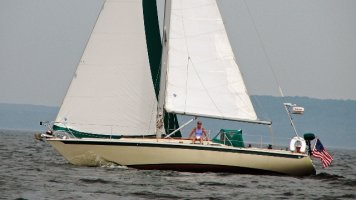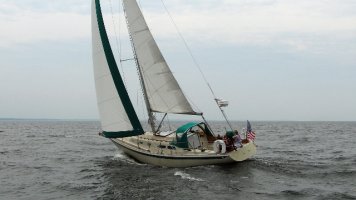robjpowell
Member II
I am at the point of ordering a new Dacron mainsail and therefore have the luxury of deciding on reefing percentages. The old mainsail I 'inherited' when I bought the boat 5 years ago is so VERY stretched and bagged that I hesitate to infer anything useful from the 20/40% reductions the 2 current reefs give. At present as soon as the wind comes up to 15 the boat heels and I get that look from my beloved. Realizing that most of this heel is due to the lack of shape in the sails we are flying it makes it hard to know what to do -should I get a 1st reef point that is smaller so we reef early but don't excessively loose sail area? Should we go with the 'standard' percentages? Or, should I opt for larger percentages? Over the years I have spent significant time on boats that performed best with 15/40, 20/40 and 25/50% reductions as their 1st and 2nd reefs. I just don't have any experience with a properly outfitted E35-2. I am sure in the collective experience there is something that is known to work well and something that people have regretted opting for. Can you share with me what has worked well for you? Do you know what the original factory percentage reductions were?
Thanks in advance
Rob
PS; We currently use Blue Chip for shorthanded family cruising (day and coastal) but do hope to do some distance/pursuit races once the new sails are here. We do not intend to use her for beer can races or offshore work as I have several more modern boats I already sail on for those races.
Thanks in advance
Rob
PS; We currently use Blue Chip for shorthanded family cruising (day and coastal) but do hope to do some distance/pursuit races once the new sails are here. We do not intend to use her for beer can races or offshore work as I have several more modern boats I already sail on for those races.


